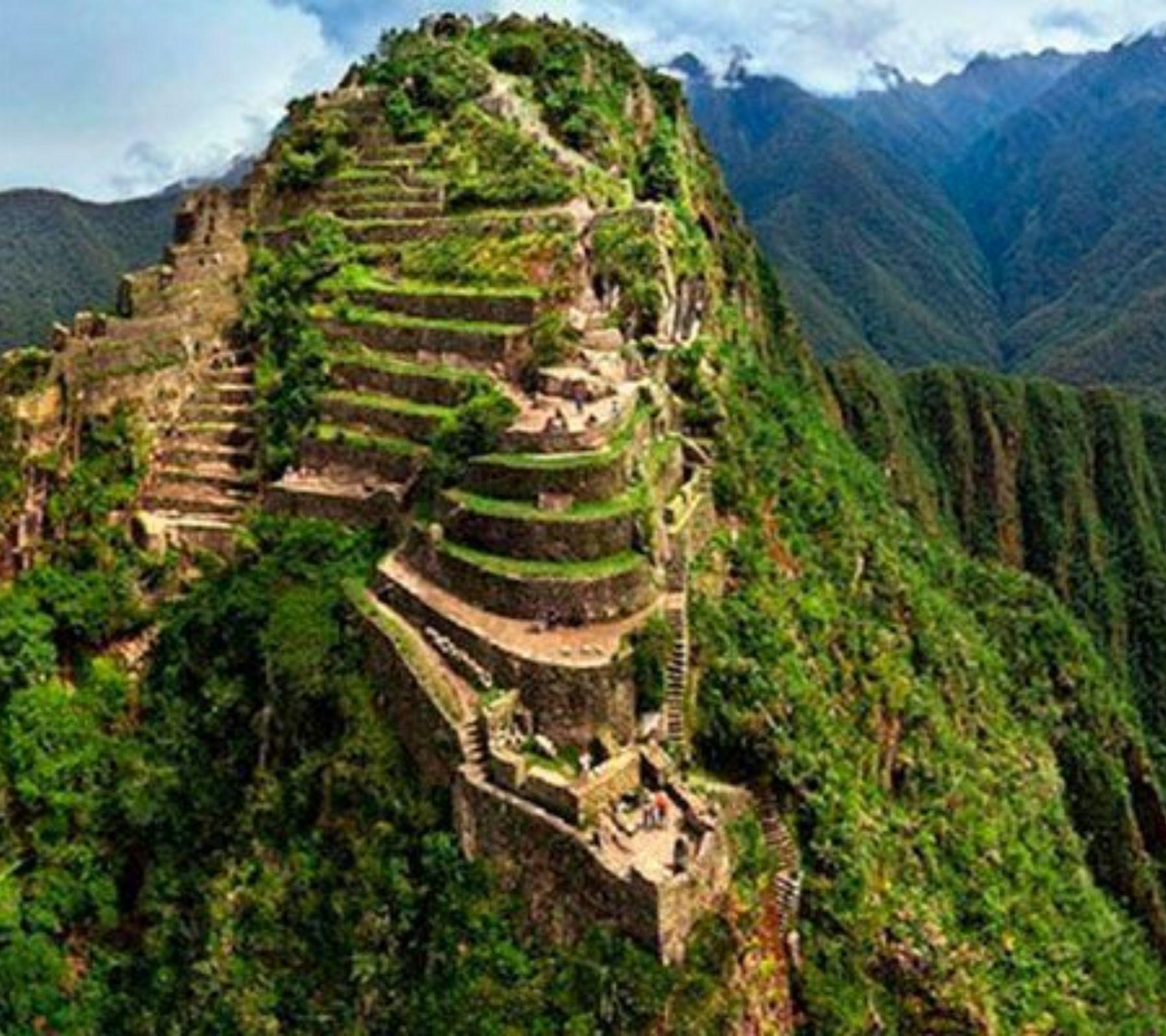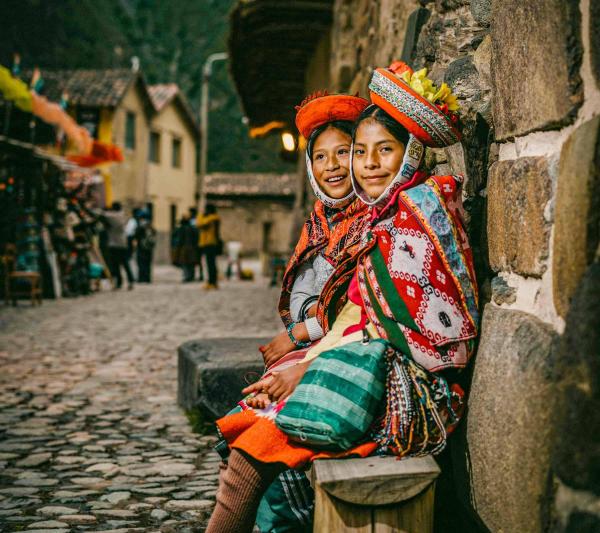Huayna Picchu is the mountain that stands out in the classic postcard photo of Machu Picchu. It is very popular among tourists, especially those who like adventure, because reaching its summit is a challenging experience. This 2-kilometer uphill route along hundreds of stone steps takes approximately 2 hours. From the top you can see a beautiful landscape of the Inca city. The purchase of the entrance ticket to this summit must be made online 3 or 4 months in advance. It includes the visit to the archaeological site of Machu Picchu.
Huayna Picchu, also known as New Mountain or Young Mountain in its translation from Quechua to Spanish, is located at 2,667 m.a.s.l. in the Cusco region. Its circular base is surrounded by the Urubamba River, north of the citadel of Machu Picchu. It will be worth getting to this place because you will see the land of the Incas in its fullness and the snowy peaks of the Andes.
What is Huayna Picchu?
Huayna Picchu is the name given to the enormous peak that rises right in the middle of the Inca city of Machu Picchu. It is very popular among tourists because it offers a hiking route to its top through ancient stone steps built by the Incas hundreds of years ago. On this mountain the Incas also built platforms, smaller enclosures and even temples where they worshipped their celestial gods: the sun, the moon, the stars. Today it is one of the most famous short hiking routes in Cusco, Peru.
What does its name mean? How high is it?
Huayna Picchu comes from a Quechua word (the language of the Incas) that means 'Young Mountain'. This is due to the contrast in the name of Machu Picchu, which means 'Old Mountain'. Its summit reaches 2,667 metres above sea level (8,750 ft), which is about 300 metres higher than the Inca city of Machu Picchu.
History of the Huayna Picchu Mountain
The history of the Huayna Picchu Mountain is closely linked to that of Machu Picchu. Both sites were inhabited by small groups of people until they were conquered by the Incas who, under the command of the emperor Pachacutec, built Machu Picchu around 1450 AD. The work on building the stone steps at the top of 'Huayna Picchu' would have taken a little longer due to the difficult, rugged terrain in which it was located.
During the Inca era, Huayna Picchu would have served as a surveillance and control post for the citadel. In addition, religious ceremonies were held there. This is demonstrated by some temples found, such as the Great Cavern (also known as the Temple of the Moon). Based on the evidence found, it is believed that these temples continued to be built until the Inca city had to be abandoned in 1535, still unfinished.
Today, the Huayna Picchu mountain is known as the best adventure within Machu Picchu. The roads built by the Incas are traveled by hundreds of tourists every day. From the top you can take one of the best postcard photos of the Inca city. The fame of this mountain is such that for many visitors, going to Machu Picchu and not visiting the ‘Huayna’ is like not having gone.
What to do in Huayna Picchu?
Hiking route – The walk from Machu Picchu to the top of the Huayna Picchu mountain covers about 2 kilometers of sections, most of which are up steep steps (with a maximum of 60 degrees). Getting to the top takes between 1 and 2 hours, depending on the physical endurance of the tourist. At the top, you can see beautiful landscapes. The return path follows the same route as the climb. However, if you decide to go to the Temple of the Moon, the path is different and longer.
The Stairs of Death – One of the most famous sections during the route to the top of the Huayna Picchu mountain are the so-called ‘Stairs of Death’. The name of these steep stairs is due to the difficulty required to overcome them. No one has lost their life during this section that requires both hands to continue climbing. It is located almost at the last part of the path to the top of Huayna Picchu.
The Great Cavern (entrance with the Machu Picchu + Temple of the Moon ticket) – The Temple of the Moon or Great Cavern is a site located on the opposite side of the mountain, built inside a cave. It has walls, windows, tables polished to such perfection that the place would have been used to perform religious rituals of great importance. You get there by taking a detour from the top of Huayna Picchu. This involves an additional two hours of walking. That is why few tourists dare to go to the Great Cavern. If you are lucky enough to go there, you will surely be almost alone with the temple.
Flora and fauna – On the Huayna Picchu mountain it is possible to find a diversity of plants, insects, birds and, with luck, wild animals. The most common and popular species of flower is the orchid, considered the flower of Machu Picchu due to its great diversity of up to 400 species. It is also easy to come across lizards, hummingbirds, vizcachas, cock-of-the-rocks and even the famous spectacled bear.
Is it dangerous?
Social networks and internet forums have created the idea that climbing the Huayna Picchu mountain is dangerous. However, according to the majority of visitors who have been there, this is false. The sections are steep, difficult but not dangerous. No one has slipped trying to climb and fallen off a cliff. What should be taken into account is that older adults must be in good physical condition to climb this mountain. Climbing the steps located at a high altitude can cause accelerated breathing and, in the case of people with heart problems, fainting. Older adults are advised to consult with their doctor before undertaking this adventure.






